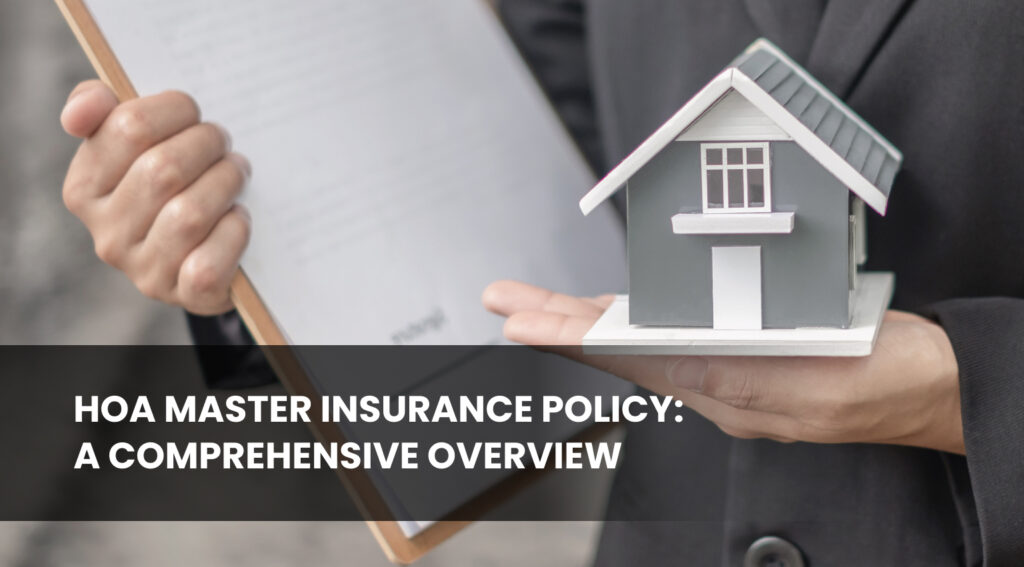
HOA Master Insurance Policy: A Comprehensive Overview
The purpose of a HOA master insurance policy is to shield the association, building structures, and common area property from liability. Although this coverage is essential, personal property or improvements made within individual units are not covered. To be fully protected, homeowners must have their own HO-6 insurance. Given the prevalence of hazards like earthquakes and wildfires in California, it's critical for homeowners and HOAs to comprehend coverage specifics and close any possible gaps.
What Is an HOA Master Insurance Policy?
A homeowners association (HOA) purchases a master insurance policy to protect shared property and lower liability risks. It provides community-wide protection, covering shared buildings, amenities, and potential legal claims, but individual homeowners are still responsible for insuring the interior of their apartments and personal belongings.
Overview of Coverage
| Coverage Area | Typically Included | Not Included |
| Common Areas | Pools, gyms, walkways, landscaping | Items owned by residents |
| Exterior Structures | Roofs, elevators, exterior walls | Interior finishes and décor |
| Liability Protection | Injuries or lawsuits in shared spaces | Injuries inside private units |
| Property Damage | Fire, vandalism, storm damage to shared property | Damage inside units |
| D&O Liability (optional) | Board member protection against claims | Personal matters unrelated to HOA |
Types of HOA Master Policies
1. Bare Walls Coverage
This fundamental policy leaves the interior of each unit bare, providing protection only for the common areas and shared building structure. Since homeowners are in charge of everything inside their homes, including plumbing and paint, it is imperative to obtain their own personal space policies.
2. Coverage of a Single Entity
This coverage extends beyond the bare walls method and includes the original fixtures in each apartment, like sophisticated countertops and cabinetry. It does not, however, cover any personal improvements made by the homeowners, so they will still need to think about getting extra insurance for their unique touches and improvements.
3. All-In Coverage
The most comprehensive of the options, this policy safeguards not only the building's common areas and structural integrity but also a variety of features within individual units. By primarily refocusing their attention on insuring their personal belongings, it provides owners with peace of mind and a sense of security in their living spaces.
Why Individual Insurance Is Still Necessary for Homeowners
Homeowners are frequently exposed to a variety of risks even with a master policy in place. An essential safety net is provided by a personal HO-6 condo insurance policy, which protects your priceless possessions, covers liability for accidents that occur in your apartment, and covers any renovations or additions you've made to your living area.
Condo owners may be exposed to severe out-of-pocket costs in the unfortunate event of a claim if they do not have this specialized coverage, which could put them in danger of financial difficulties.
Considerations Particular to California
When planning homeowners association (HOA) insurance, California communities face unique risks that must be carefully taken into account:
1. Wildfires
Given the state's susceptibility to wildfires, particularly in areas with dense vegetation, it is crucial to assess the potential need for supplemental coverage. To properly protect properties from the extensive damage that wildfires can cause, additional coverage options should be looked into, as standard insurance policies might not provide complete protection.
2. Earthquakes
Earthquakes pose a significant threat in California, where tectonic plate activity is prevalent. Most standard insurance policies explicitly exclude earthquake damage, making it essential for HOAs in high-risk regions to secure separate earthquake insurance. This specialized coverage can provide critical financial support for repairs and rebuilding in the aftermath of seismic events.
3. Flooding
California may not be as notorious for flooding as some other states, but there is a significant risk of flooding in a few places, especially those which are close to rivers or in low-lying areas. Since flood insurance is usually excluded from regular property insurance, HOAs frequently need to purchase an additional policy to guard against damage from flooding.
California law also mandates that HOAs maintain a set of minimal insurance requirements to protect their members. To guarantee that all residents are aware of the protections available to them and any potential gaps, HOAs are also required to give homeowners yearly disclosures that describe the extent of the insurance coverage in place. Building trust and making sure locals feel safe in their community's risk management initiatives depend heavily on this openness.
Key Takeaways
- The HOA master insurance policy is essential for community-wide protection.
- Coverage varies depending on whether it is bare walls, a single entity, or all-in.
- Homeowners must maintain HO-6 insurance for personal belongings and liability.
- California HOAs must pay close attention to wildfire, earthquake, and flood risks.
- Annual policy reviews are crucial to prevent coverage gaps.
Connect with e360 Insurance Services
Choosing the right coverage for your HOA can be complex. The right master insurance policy, paired with proper individual coverage, ensures protection for both the community and its residents.
e360 Insurance Services specializes in guiding California HOAs and homeowners through these decisions with clarity and expertise. Contact our team today to review your HOA master insurance policy and ensure your community has the protection it needs.
FAQs
Q1. Does the HOA master insurance policy cover my personal belongings
No. Personal belongings are covered only by your HO-6 condo policy.
